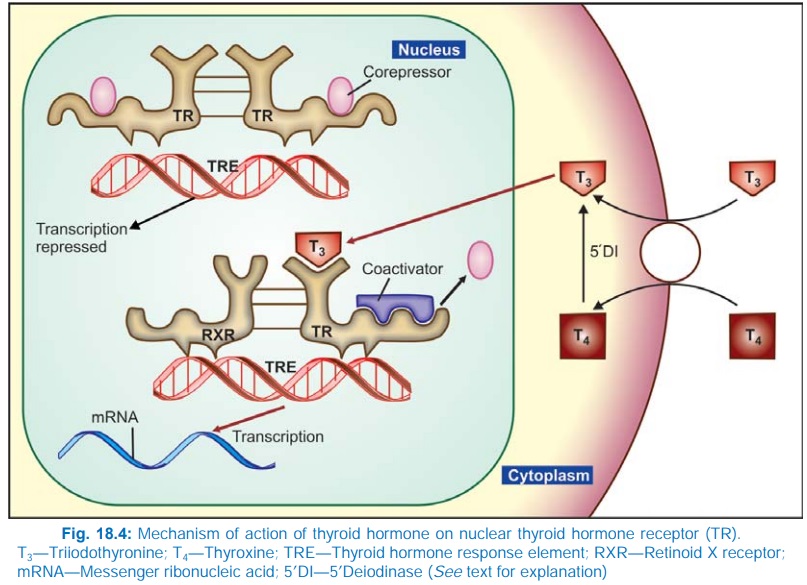Mechanism of Action of Thyroid Hormone
| Home | | Pharmacology |Chapter: Essential pharmacology : Thyroid Hormones And Thyroid Inhibitors
Both T3 and T4 penetrate cells by active transport and produce majority of their actions by combining with a nuclear thyroid hormone receptor (TR) which belongs to the steroid and retinoid superfamily of intracellular receptors.
MECHANISM OF ACTION
Both T3 and
T4 penetrate cells by active transport and produce majority of their
actions by combining with a nuclear thyroid hormone receptor (TR) which belongs
to the steroid and retinoid superfamily of intracellular receptors.
Two TR isoform
families (TRα and TRβ) have been
identified. Both bind T3 and function in similar manner, but their
tissue distribution differs, which may account for quantitative differences in
the sensitivity of different tissues to T3.
In contrast to the
steroid receptor, the TR resides in the nucleus even in the unliganded inactive
state. It is bound to the ‘thyroid
hormone response element’ (TRE)
in the enhancer region of the target genes
along with corepressors (Fig. 18.4). This keeps gene transcription suppressed.
When T3 binds to the ligand binding domain of TR, it heterodimerizes
with retinoid X receptor (RXR) and undergoes a conformation change releasing the
corepressor and binding the coactivator. This induces gene transcription → production of
specific mRNA and a specific pattern of protein synthesis → various metabolic and
anatomic effects.
Many of the effects,
e.g. tachycardia, arrhythmias, raised BP, tremor, hyperglycaemia are mediated,
at least partly, by sensitization of adrenergic receptors to catecholamines.
Induction of adenylyl cyclase, proliferation of β adrenoceptors and a
better coupling between these two has been demonstrated.
Apart from the nuclear
T3 receptor, other sites of thyroid hormone action have been
described. It acts on cell membrane to enhance amino acid and glucose entry and
on mitochondria to
increase oxygen consumption. At these sites T4 appears to be
equipotent to T3, while at the nuclear receptor T4 has
much lower affinity, and even when bound to the TR, T4 does not
promote gene transcription.

Related Topics
